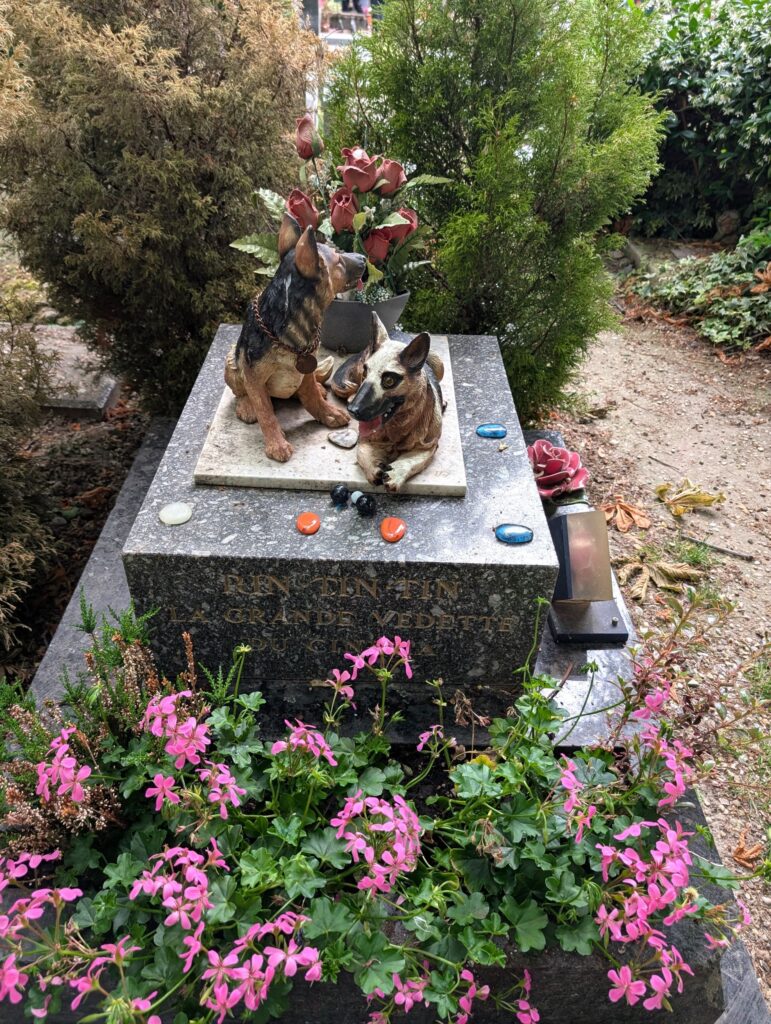I’m familiar with many of the superlatives describing Paris — most beautiful, best cafes, finest museums, best-dressed inhabitants — but only recently did I learn that it’s also home to the world’s oldest pet cemetery.
Technically, the Cimetière des chiens is in Asnières-sur-Seine, a close-in surburb on the northern loop of the river. But I’m sure that many of the 90,000 present and past residents came from the city. A recent tour revealed it to be a peaceful, leafy park filled with loving monuments to Kiki, Sissi, Willy, Bobby, Tony, Nancy, Rudy, Whisky, Othello, Sniff and many others. Not to mention Napoleon’s dog, Moustache, Alexandre Dumas fils’ cat, Mysouff, and Marguerite Durand’s horse, Gribouille.
Rin Tin Tin is there too, but we’ll get to that.
The first three animals I named are portrayed in a statue just outside the park.
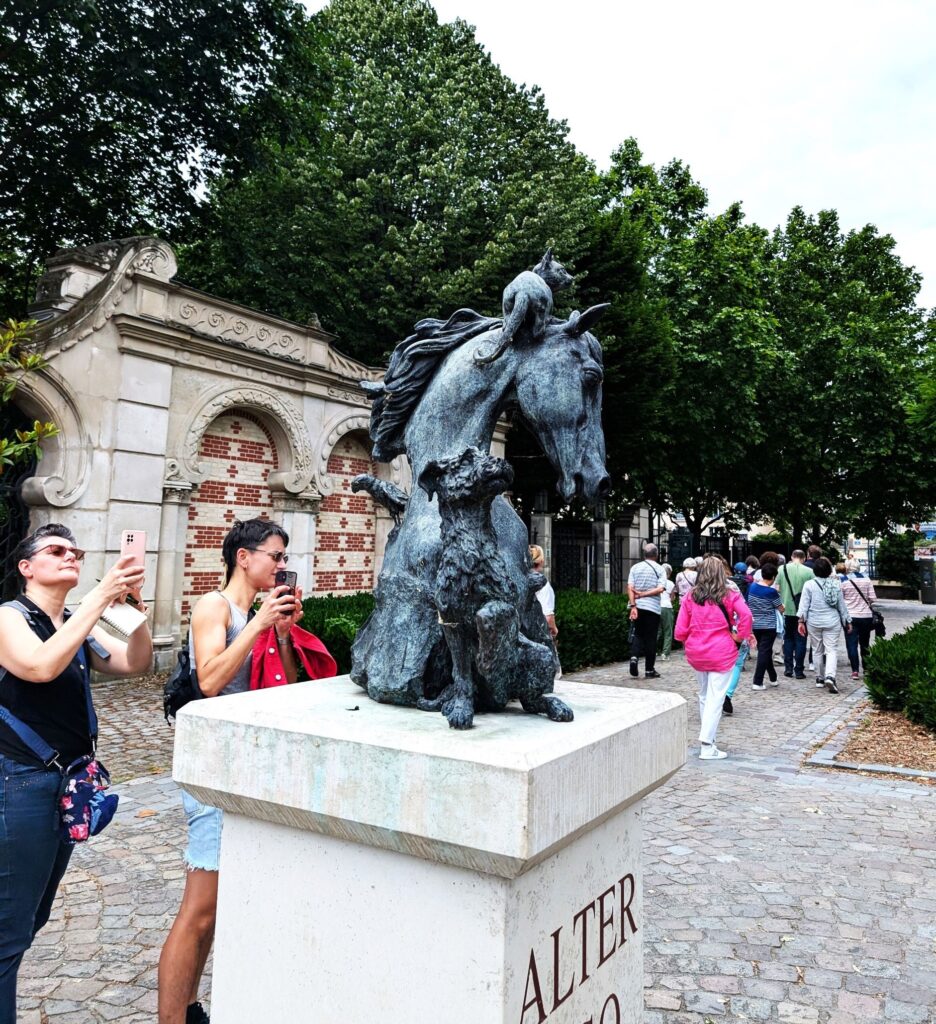
Durand, a writer, actress and suffragette, co-founded the cemetery with lawyer George Harmois in 1899 after Parliament passed a law allowing animals to be buried in urban areas, away from human habitation. It was just at the time when prosperity and peace allowed more people to have domestic animals.
Visitors are greeted at the entrance with memorials to two dogs. One is Barry, a Saint Bernard who saved 40 people.
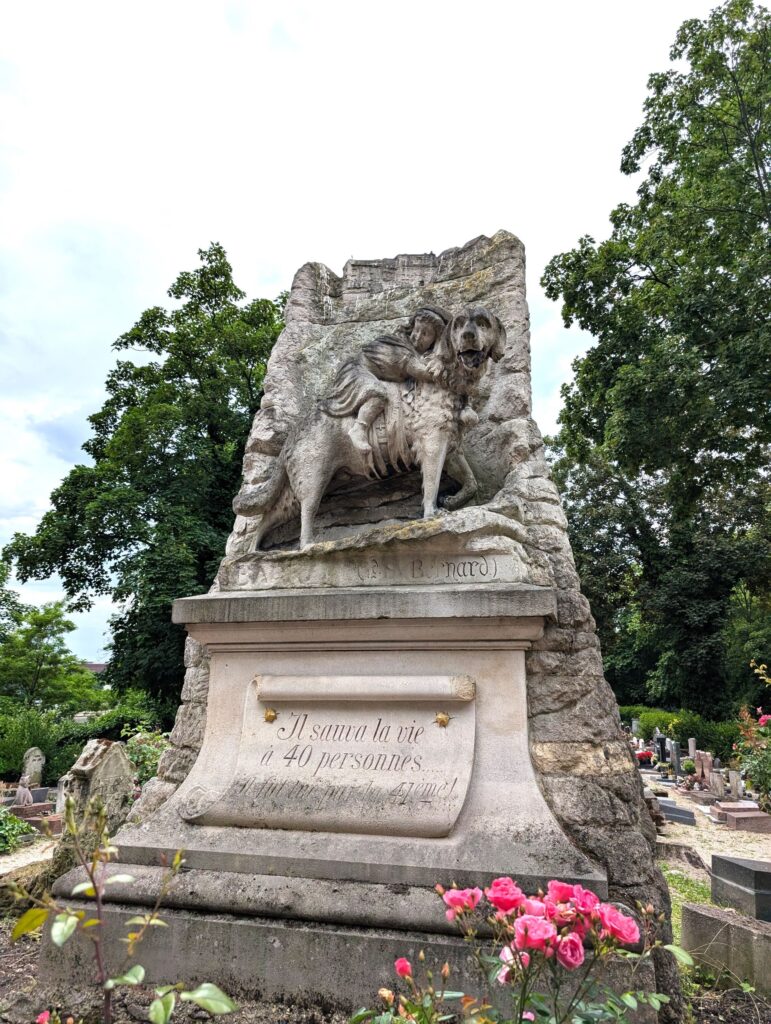
Unfortunately, he was killed by the 41st, a soldier who apparently mistook him for a wolf.
On the other side of the pathway is the grave of what we might call the Unknown Dog: A stray found deceased in front of the gates in 1958. This chien errant represents all abandoned pets, our guide explained.

Before the tour, we were told we might find pet owners mourning at the graves of their loved ones, so we should be quiet and respectful. The French famously love their pets, whether in restaurants, ejecting on the streets (less of that lately as people pick up more) or in the windows of ground-floor apartments gazing at the world (especially cats).
Indeed, many of the graves we saw were lavishly maintained, with fresh flowers and polished headstones.
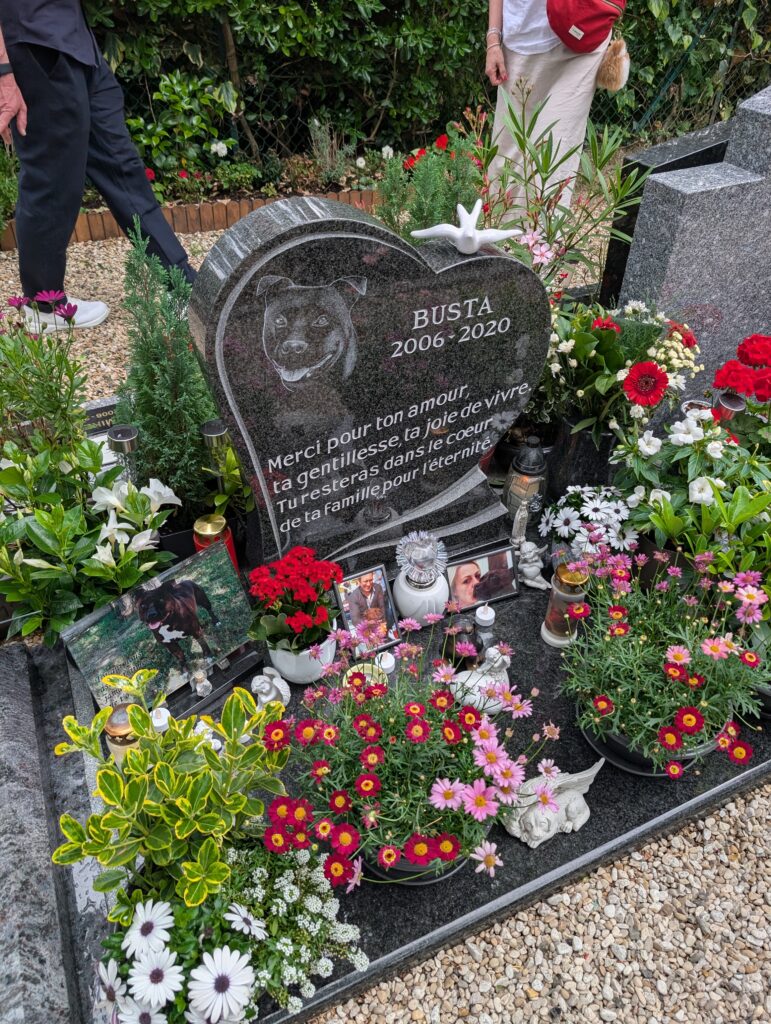
The inscription reads “Thanks for your love, your kindness, your joie de vivre. You will stay in the heart of your family for eternity.”
There were plenty of other tear-making headstones.
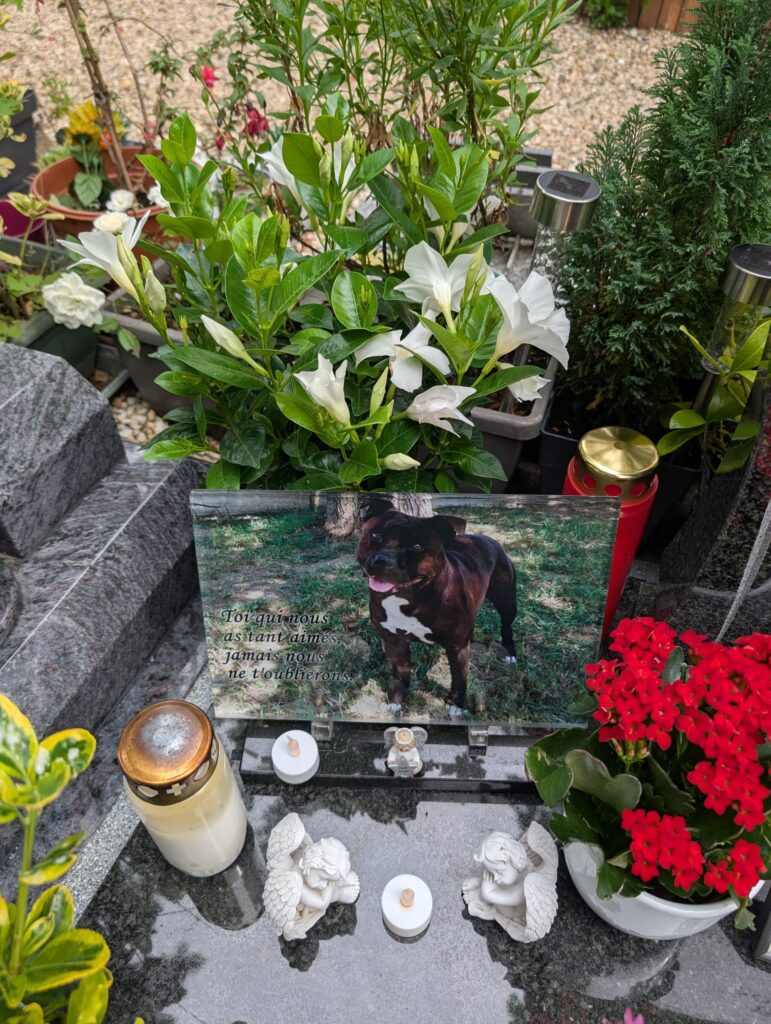
“You who loved us so much, we will never forget you.”
Times 849. That’s how many gravesites there are now, according to the website. The 90,000 includes every burial over the cemetery’s 125-year history, plus ashes (Even now, you can get permission to scatter the ashes of your pet, with proper documentation of course.). This video, in French, provides an overview.
The graves cost anywhere from €1,000 ($1,140) to €2,700, depending on size. A yearly contract runs in the hundreds of euros, and the cemetery managers are very strict about insisting that concessionaires provide means of payment even after they themselves have died.
Dogs and cats make up 95% of the tenants, unsurprisingly.
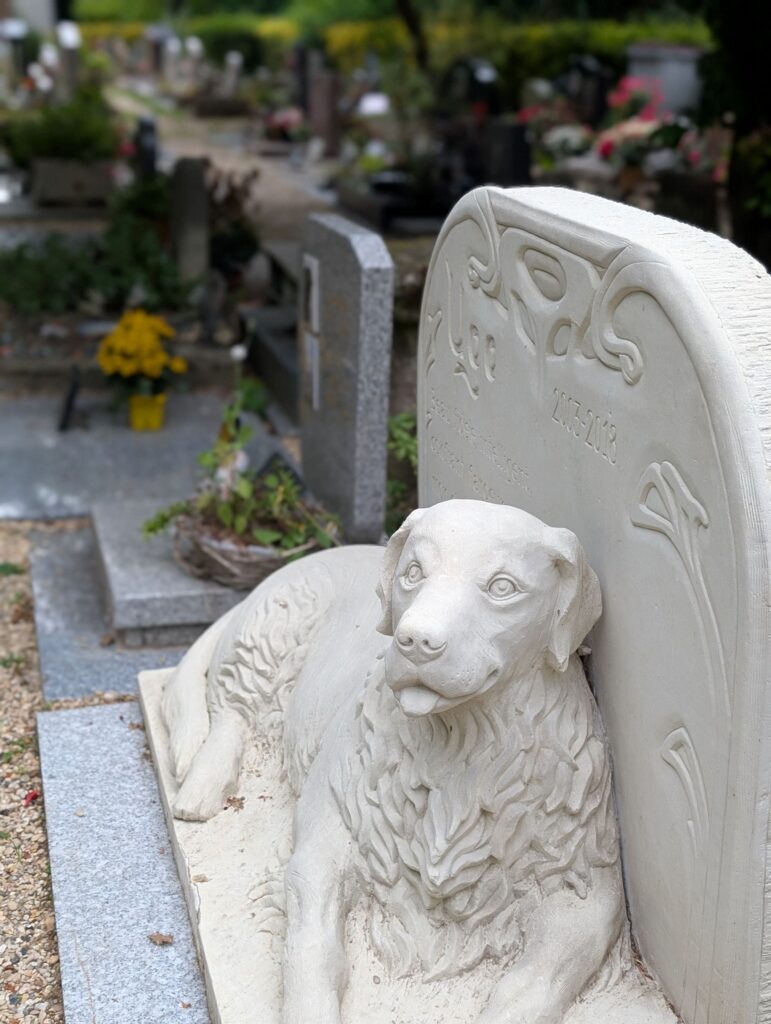
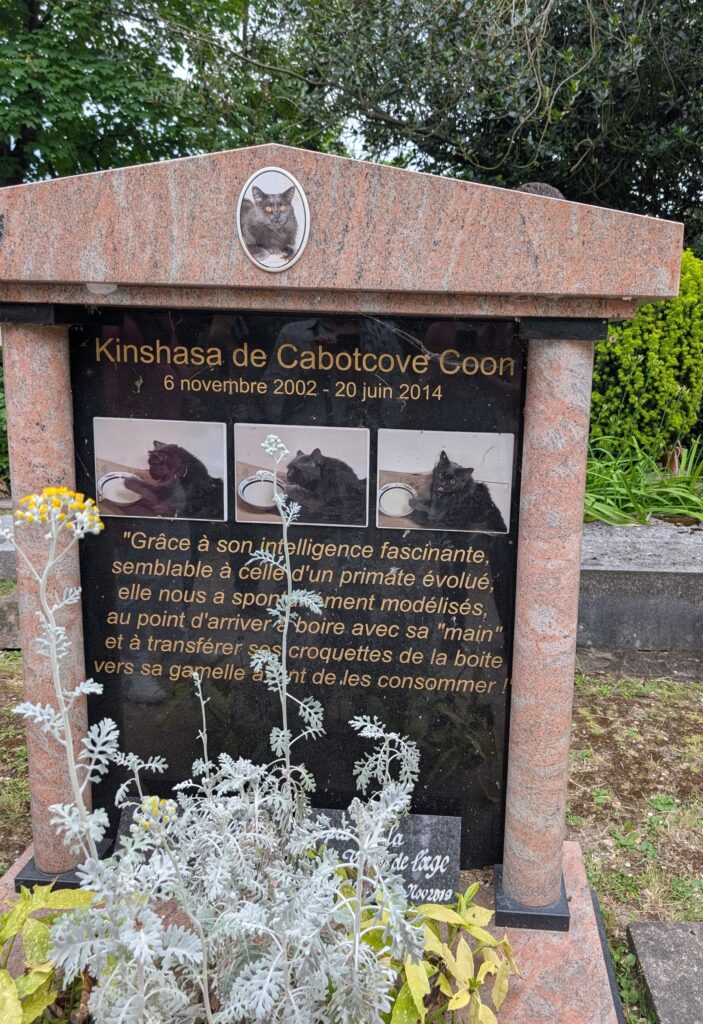
It appears that the breed described for this cat is known in the U.S. as Maine Coon Cat, since Cabot Cove is a fictional town. In any case, this inscription says that Kinshasa was so intelligent that he taught himself to transfer food from his bowl to his mouth with a paw, and to drink milk with his paw as well.
But as noted, there are many other species, including horses, sheep, birds, rabbits, lions, monkeys, pigs, a frog and, I am not making this up, one bee. B., as he or she is named, was placed by the park’s managers as a symbol of all the good that bees do for flora and fauna.

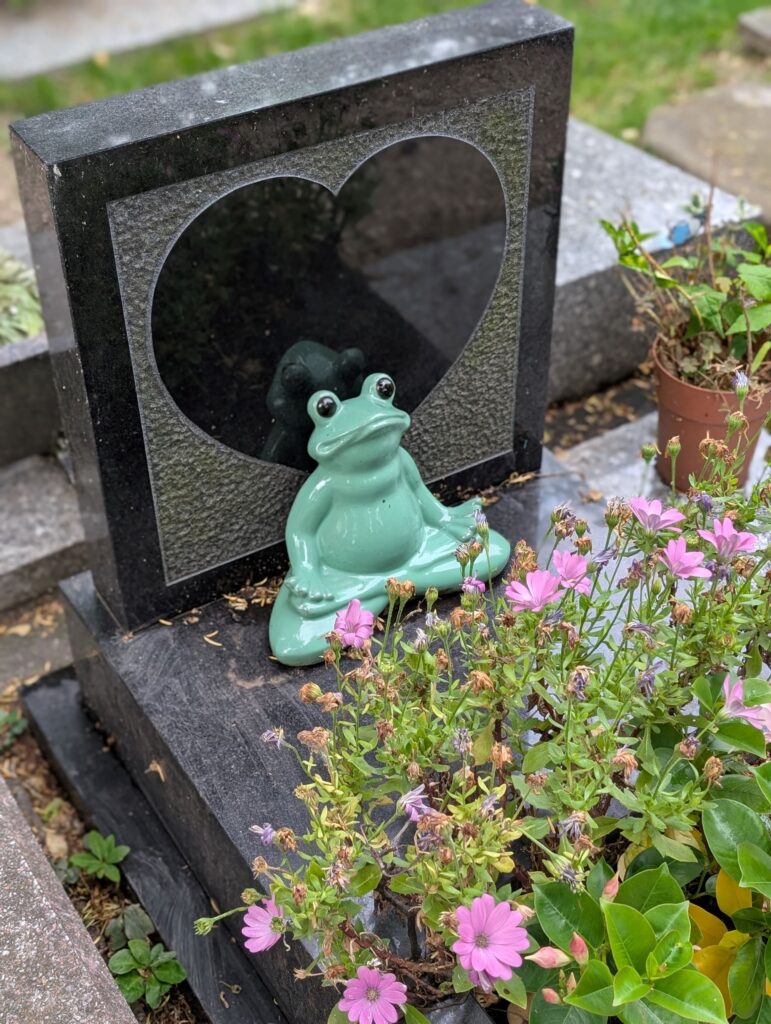
And of course there’s Rin Tin Tin (or, as he’s called in France, Rintintin). I bet you didn’t know the world’s most famous movie and TV dog was French. The original Rin Tin Tin was found with a litter of siblings in a bombed-out kennel in the Meuse Valley in 1918, by one Lee Duncan, an American soldier. The Germans had probably left them behind, Susan Orlean writes in “Rin Tin Tin: The Life and the Legend.”
Duncan took a male and female puppy and named them Rin Tin Tin and Nanette, after a pair of dolls considered a wartime good luck charm. And indeed, Duncan managed to keep them with him during battle and a subsequent injury, and to wangle them onto a returning military transport ship with him. Nanette died shortly after arriving in the U.S. but Duncan took Rin Tin Tin to Hollywood movie stardom.
When the dog died in 1932, Duncan brought the remains back to France and the pet cemetery, where the grave depicting him and Nanette serves as a reminder that Americans, too, love their animaux de compagnie.
